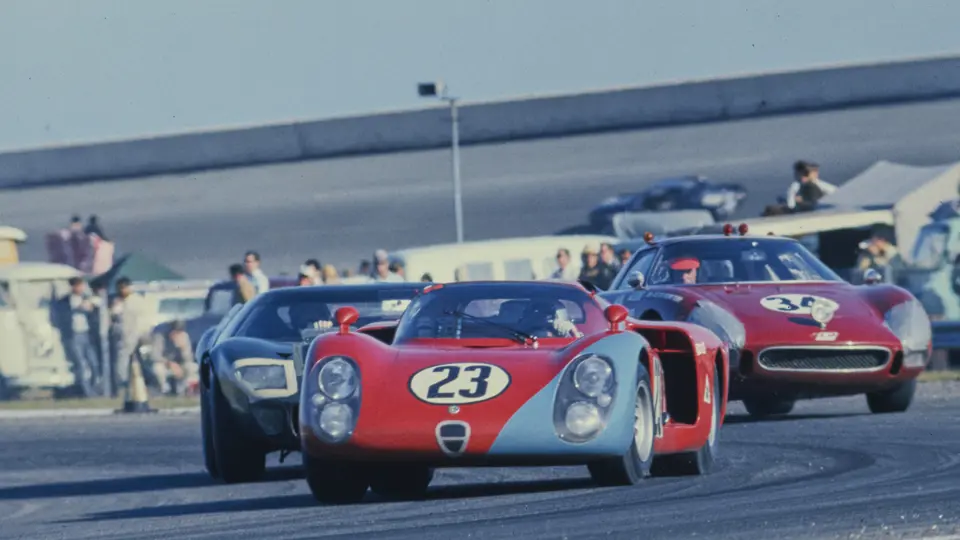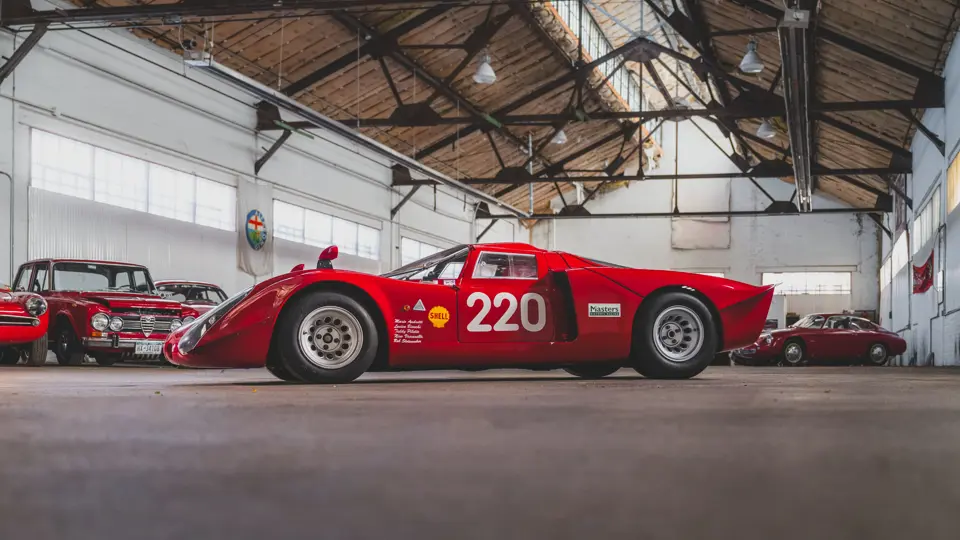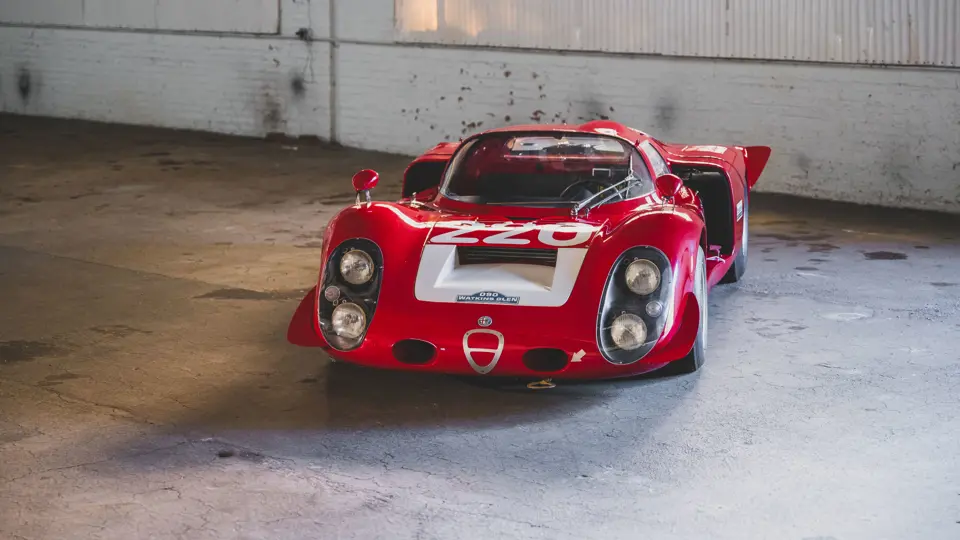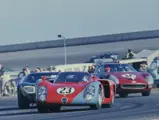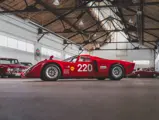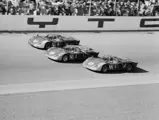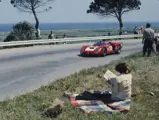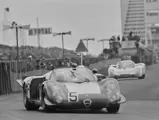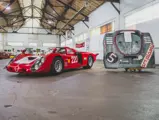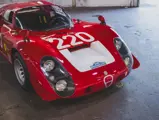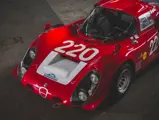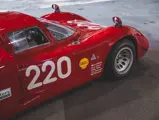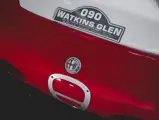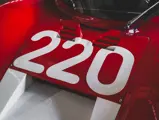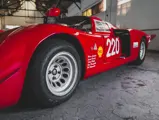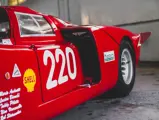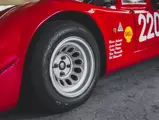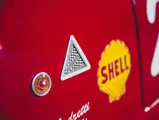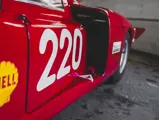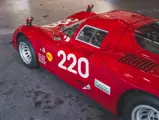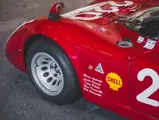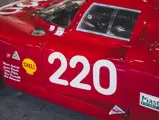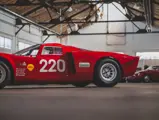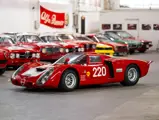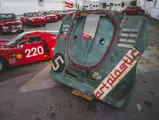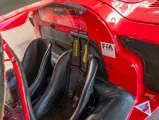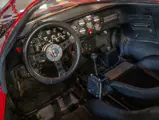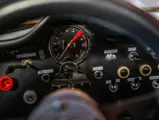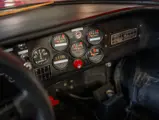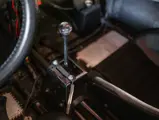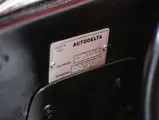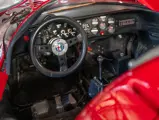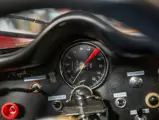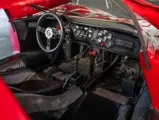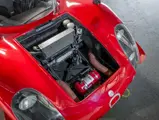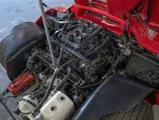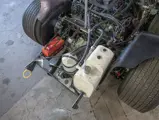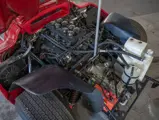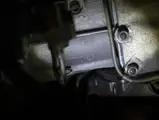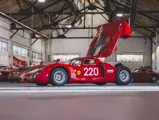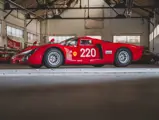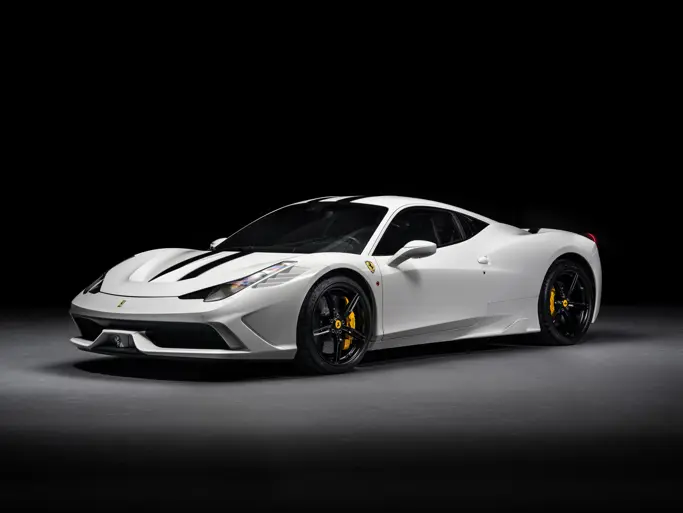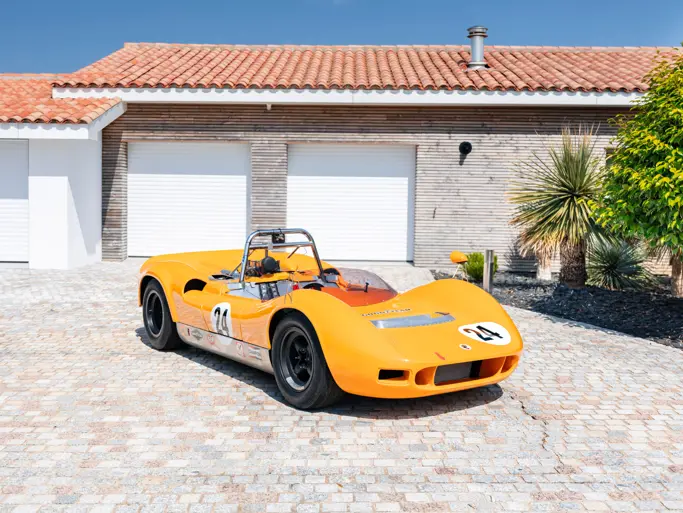
1968 Alfa Romeo T33/2 'Daytona'
{{lr.item.text}}
$1,160,000 USD | Sold
From The Quadrifoglio Collection
{{bidding.lot.reserveStatusFormatted}}
- The first of only a handful of T33/2 examples factory-equipped with a 2.5-liter engine during the 1968 season; one of approximately 10 surviving T33/2s
- Raced by Autodelta during 1968, and Team VDS during 1969, including the 1968 24 Hours of Daytona, Targa Florio, and Nürburgring 1000 KM and 1969 Monza 1000 KM and Spa 1000 KM
- Campaigned by Portuguese privateers in Angola during the early 1970s
- Restored by ex-Autodelta mechanic Marcello Gambi during the 1990s, and significantly freshened and maintained during current 13-year ownership; regularly tested and prepared for vintage racing since 2000
- Rare and important example of Milan’s celebrated prototype racing legend
One of Alfa Romeo’s most celebrated competition models without question, the exquisite T33 succeeded the TZ as Milan’s factory-program sports-racing competition car. Largely developed by ex-Ferrari engineer Carlo Chiti’s Autodelta, which served as Alfa Romeo’s de facto racing arm, the T33 featured an advanced chassis driven by a powerful 2-liter V-8 engine, all wrapped in slippery closed coachwork in the vein of concurrent prototypes like the Ferrari P4 and Porsche 908. T33 evolutions contributed to two Manufacturers' Championships and two 2nd-place finishes for Alfa Romeo over the following 11 years, and it remains one of the most widely admired prototype racing cars of any era.
This remarkable Alfa Romeo is known to be the first of just a handful of T33/2 examples that were at some point equipped with a 2.5-liter engine. Even during the T33’s first racing season, Autodelta was already considering increasing displacement to three liters, and to this end, a 2.5-liter unit was tested in Alec Mildren’s Brabham in the Tasman Series in Australia during the winter of 1967-1968. This engine specification was soon utilized in isolated instances during the 1968 season. While there is some degree of uncertainty regarding which exact chassis were equipped with a 2.5-liter motor during individual 1968 events, Peter Collins’ and Ed McDonough’s excellent book on the model clarifies that chassis 015 ran at least four races that year, two of which featured the larger engine.
CHASSIS NUMBER 015 IN COMPETITION
Chassis number 015 made its debut at the 1968 season opener, the 24 Hours of Daytona, as one of a trio of T33/2 examples entered by Autodelta and equipped with 2-liter engines. Piloted by Lucien Bianchi and the legendary Mario Andretti, the Alfa Romeo roared to a 5th-in-class finish (6th overall), taking the middle position of a 5-6-7 consecutive finish by the three cars. While there was no separate class for under-2-liter prototypes, this dominant performance was impressive enough to earn the model the nickname “Daytona,” which was particularly appropriate considering that Autodelta had spent countless hours optimizing the T33/2 specifically for the Daytona circuit.
Entered as race #220 at the Targa Florio in May, chassis 015 became the first T33/2 to appear with the 2.5-liter engine. Local Sicilian hero Nino Vaccarella leaped out to hold 2nd place for two laps before relinquishing driving duties to Udo Schütz, who proceeded to spin the car into a wall (and out of the race) after encountering a patch of loose gravel. At the Nürburgring 1000 KM two weeks later, Schütz and Lucien Bianchi achieved a level of redemption for the 2.5-liter car with a 4th-in-class finish (7th overall).
In late August at the Austrian Grand Prix, the T33/2 was entered by the Belgian Count Rudi van der Straten, a descendent of the founders of Stella Artois beer, and the principal of the eponymous VDS racing team. This preferred Alfa Romeo client would soon play a much greater role in the car’s history, and VDS drivers Teddy Pilette and Gustave Gosselin finished 3rd in class (4th overall).
For the 1969 season the Alfa Romeo passed to VDS, and under van der Straten’s leadership the car ran at least two events, and probably several more. Highlights included a 5th-in-class finish (8th overall) at the Monza 1000 KM in late April while driven by Pilette and Rob Slotemaker, and 5th in class (6th overall) at the Spa 1000 KM in May, again driven by Pilette and Slotemaker.
AN ALFA ROMEO IN ANGOLA
The following year, VDS sold chassis number 015 to a Portuguese driver named Antonio Peixinho, and he shipped the car to Angola, the African nation and onetime Portuguese colony that was a hotbed of racing before revolution swept the country during the 1970s. During the 1970 and 1971 seasons Peixinho racked up at least five victories at circuits like Malange and the Nova Lisboa 6 Hours.
Driver Santos Peras then began racing the T33/2 in 1972, and he captured a victory at the Circuito de Carmona in July 1974. At some point, the Alfa Romeo passed to Antonio De Santos, a Portuguese national who stored the car among a group of other period racing gems, including a Ford GT40 and a Chevron B19. With the increasing violence posed by Angola’s war for independence, De Santos returned to his native Portugal, and the racecars were left to languish while becoming something of a local legend.
In the mid-1980s a Frenchman named Jean Chambault, a racing enthusiast who happened to be conducting business in Angola, heard about the dormant cars, and upon confirming the rumor he immediately contacted De Santos in Lisbon to arrange a purchase. Strangely enough, the final price included a VCR and a 2-liter Ford Cortina engine. But that was just the beginning of the negotiations, for Chambault struggled to persuade the Angolan government to release the T33/2 until finally an arrangement was made to airlift the car out in a Hercules transport plane.
Mr. Chambault soon offered the Alfa Romeo for sale, and in 1994 the car passed into a short chain of Italian-based ownership, during which time it was restored by ex-Autodelta mechanic Marcello Gambi. The next caretakers acquired the T33/2 in 2000, and after further freshening the car participated in the 2000 and 2004 Le Mans Classic. Remarkably, this potent racing machine was registered for road use in Germany at this time, as indicated by German Fahrzeugbrief paperwork on file!
In 2006 the Alfa Romeo was acquired by David Jacobs, a former skiing champion and skiwear entrepreneur based in Boulder, Colorado, and he conducted further restorative measures before embarking on a vintage racing campaign that included runs at the 2008 and 2010 Le Mans Classic, and the 2009 Monterey Historic.
Sold to the consignor in early 2012, the Alfa Romeo was further dialed in for racing use, with no expense spared. Notably, as documented by 2013 invoices on file, over $50,000 was invested in just the engine rebuild, conducted by specialists S. Jennings Racing (then located in Tooele, Utah). It was then enjoyed at competition locales including Watkins Glen, Silverstone, Nürburgring, Zandvoort, Spa, and the 2017 Monterey Historic. Following this on-track duty, the V-8 was subsequently returned to S. Jennings Racing for inspection and assessment. Given the number of hours the high-performance engine had accrued, another full rebuild was undertaken, with 2018 invoices in excess of $65,000 detailing the work performed on the engine and ancillaries.
Still fitted with the rare 2.5-liter engine, chassis number 015 is one of approximately 23 T33/2 chassis numbers allocated, of which just 10 examples are known to survive today. It should be noted that the car features a modified driver-side door for improved ease of entry, and it is accompanied by its original rear clamshell bodywork. Also accompanying the car is a substantial collection of spare parts (an inventory is on file for review).
Finished in the proper #220 race livery as seen at the 1968 Targa Florio, where the 2.5-liter engine made its debut, this jaw-dropping T33/2 promises countless thrills, be it from a mere glance at the sensuous coachwork to an exhilarating round of high-performance hot laps. Perfectly suited for the prototype racing aficionado or Alfa Romeo competition car collector, this heart-stopping Daytona would make a crowning addition to any sporting collection.




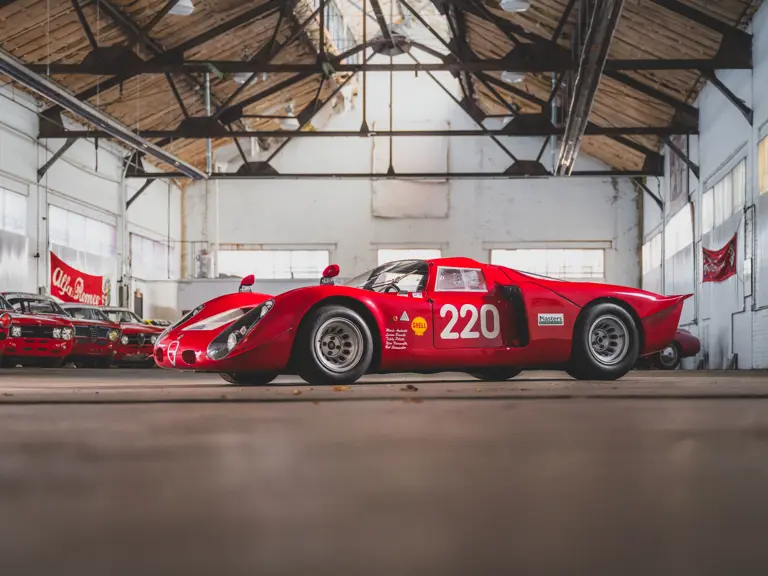
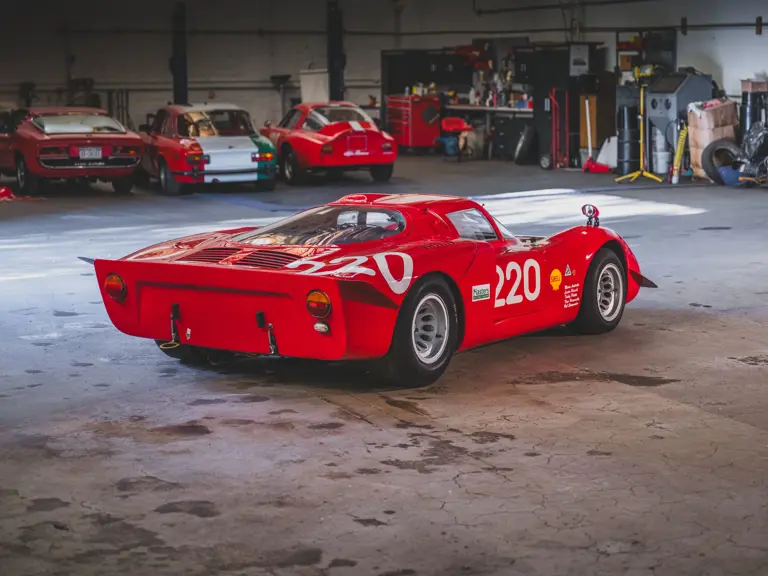

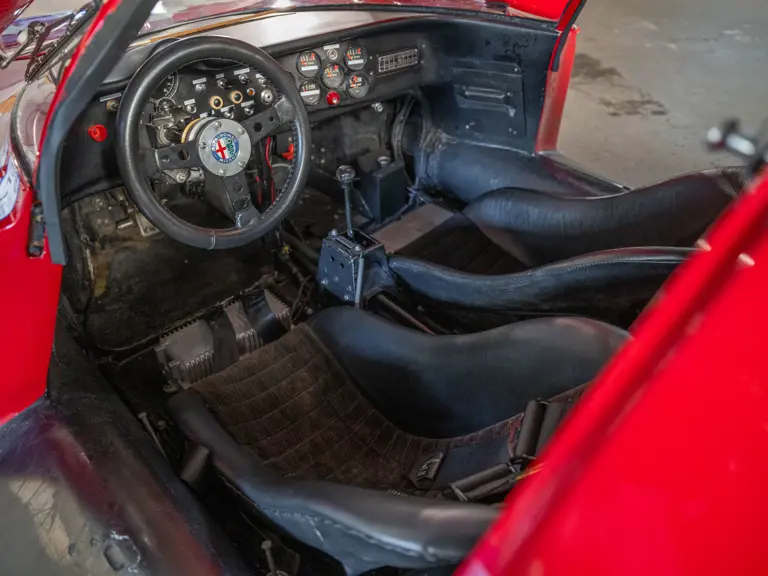
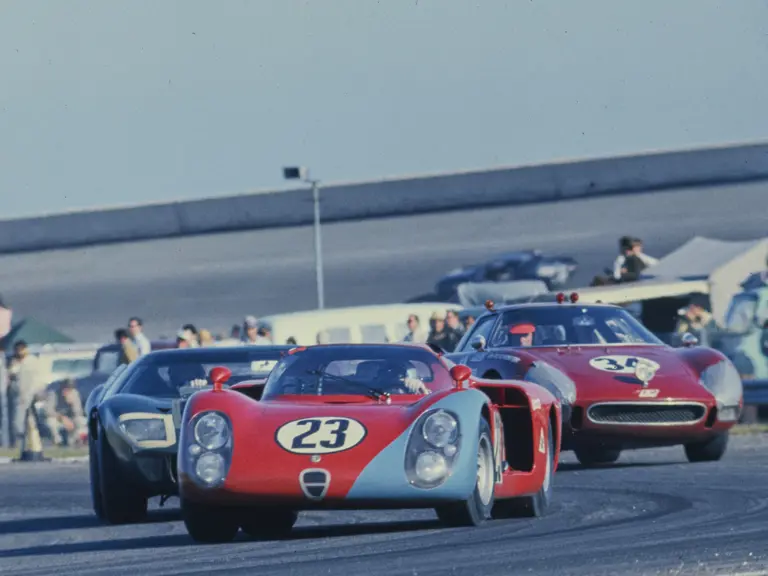
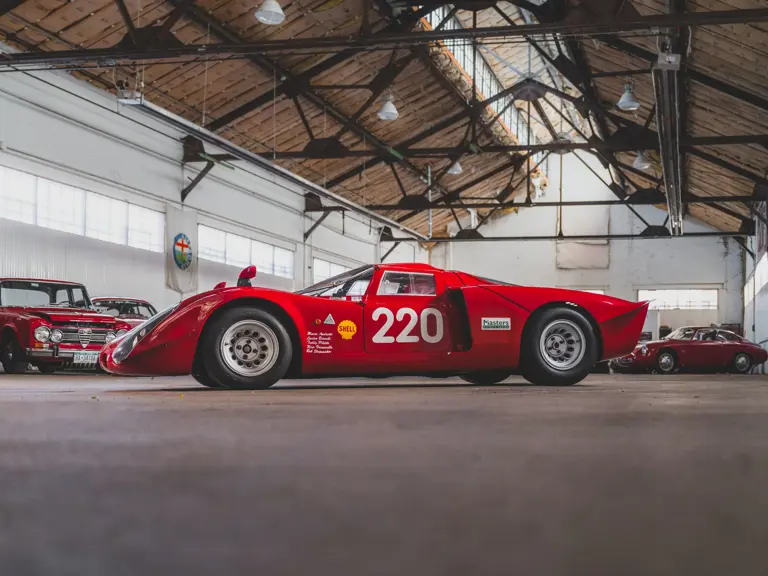
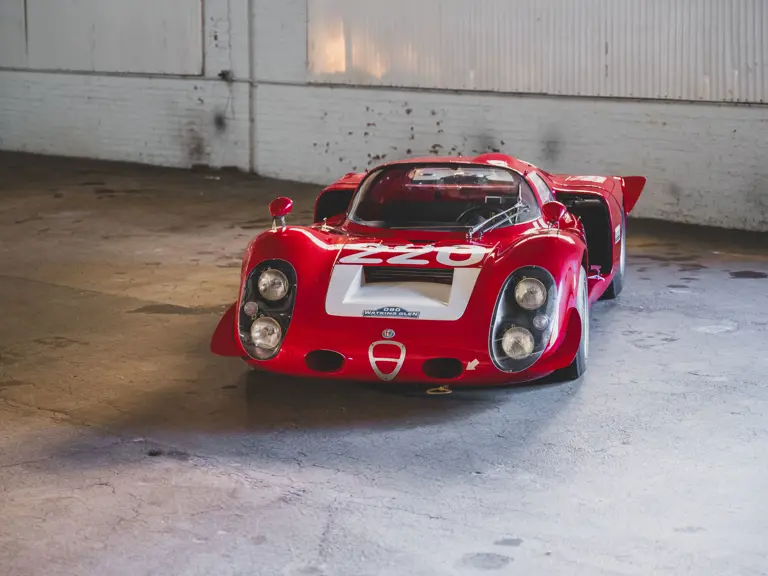
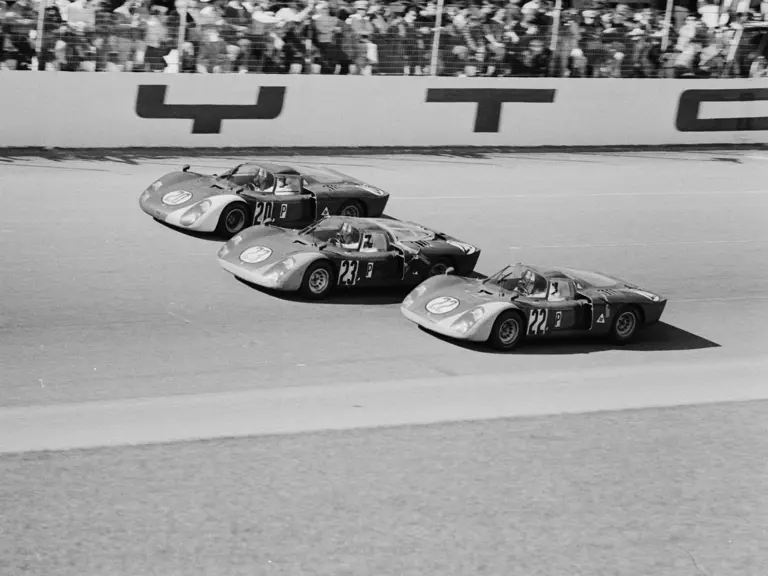
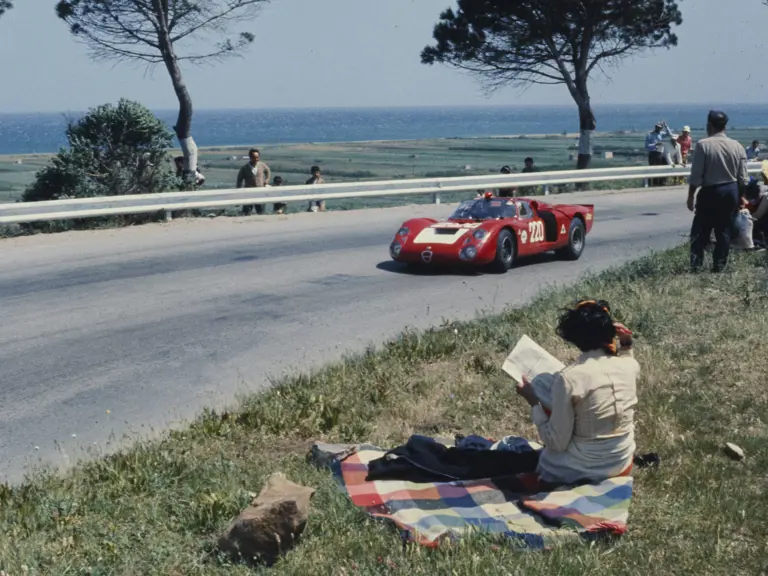
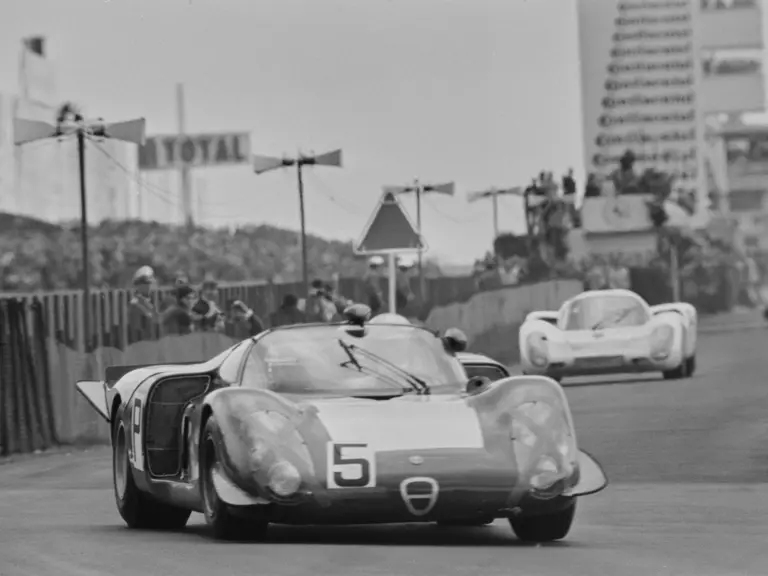
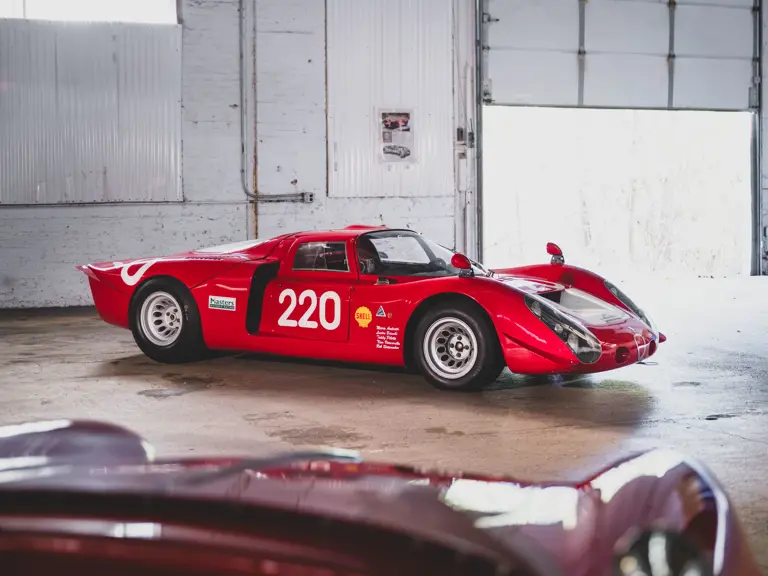
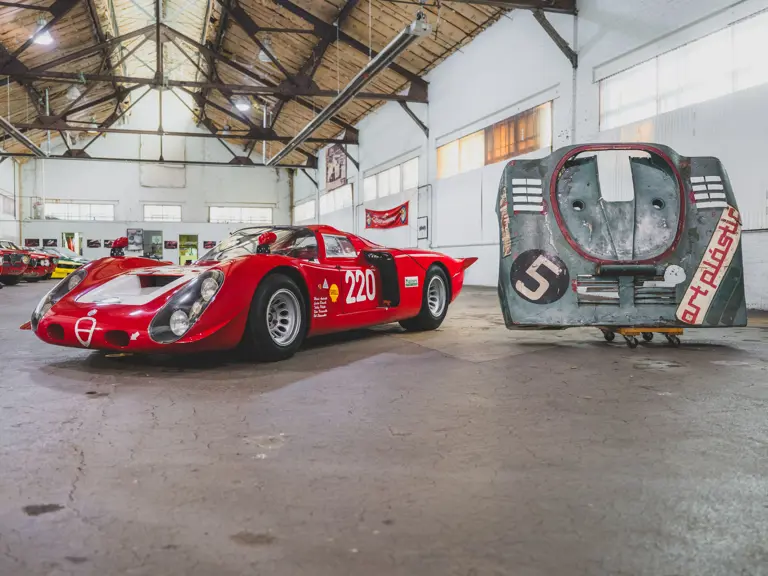
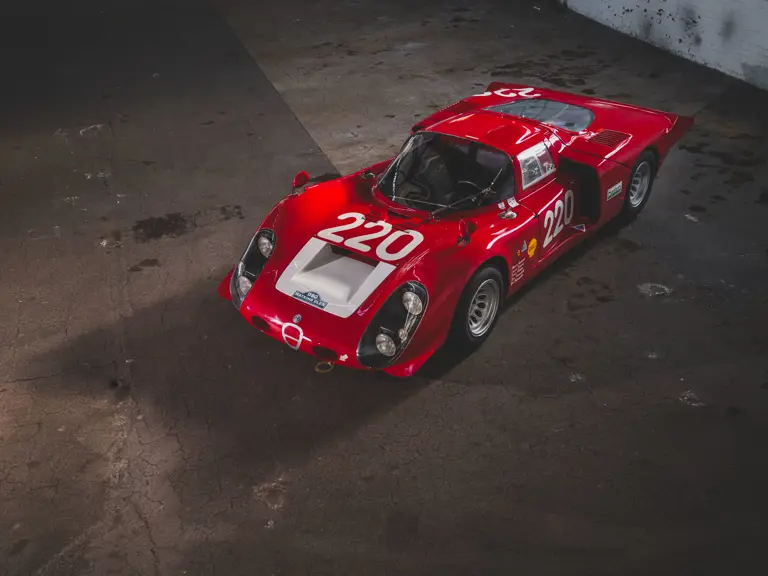
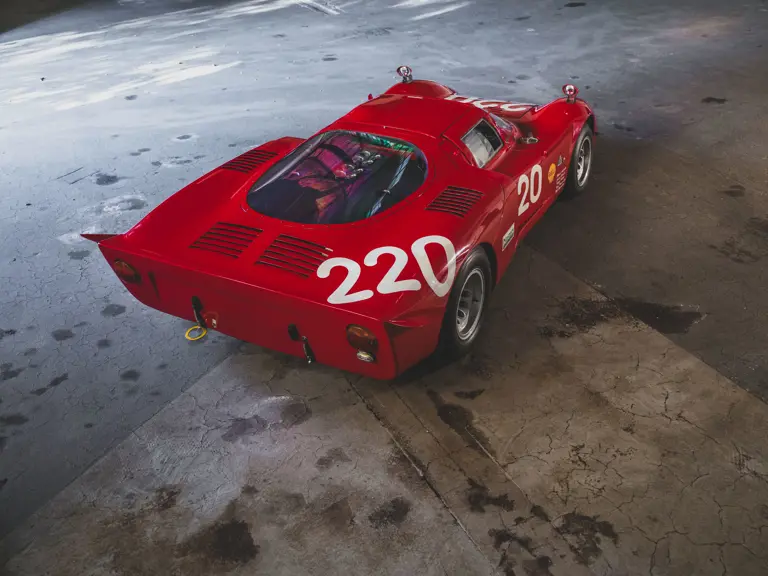
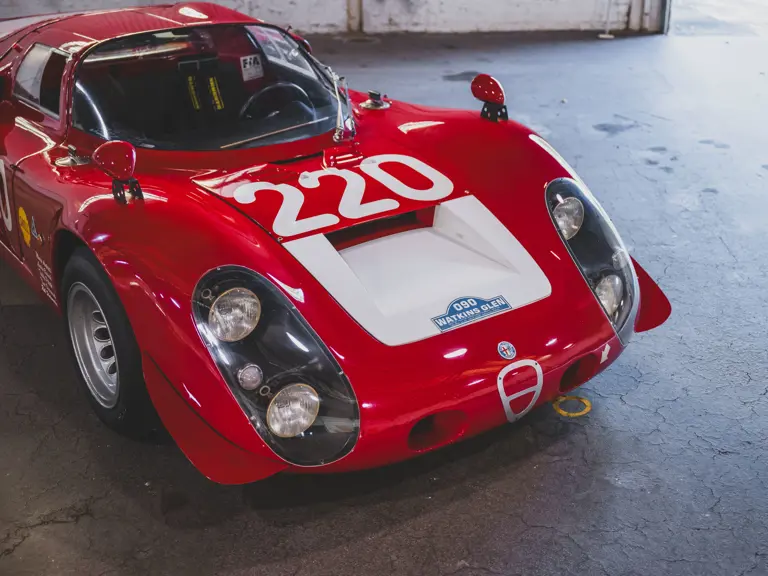
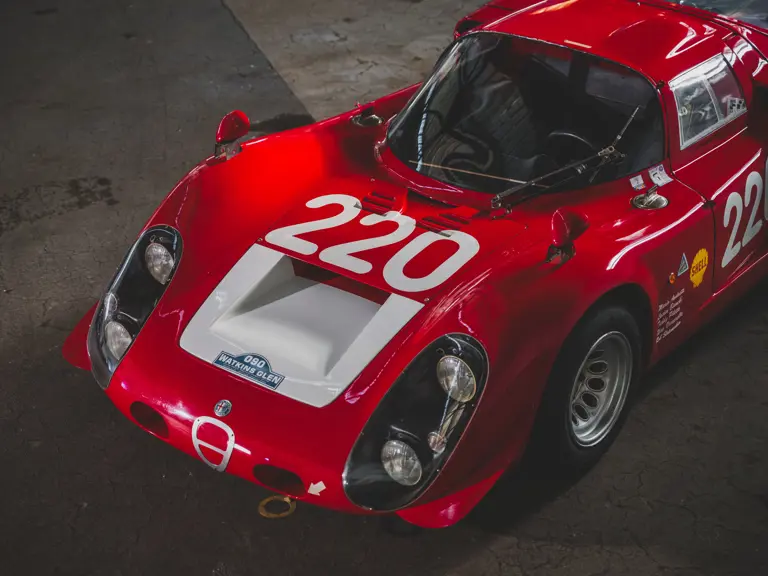

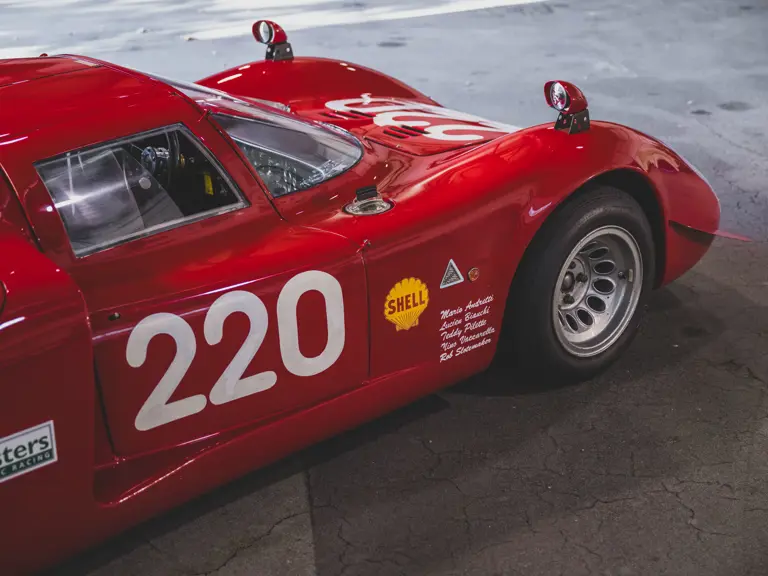
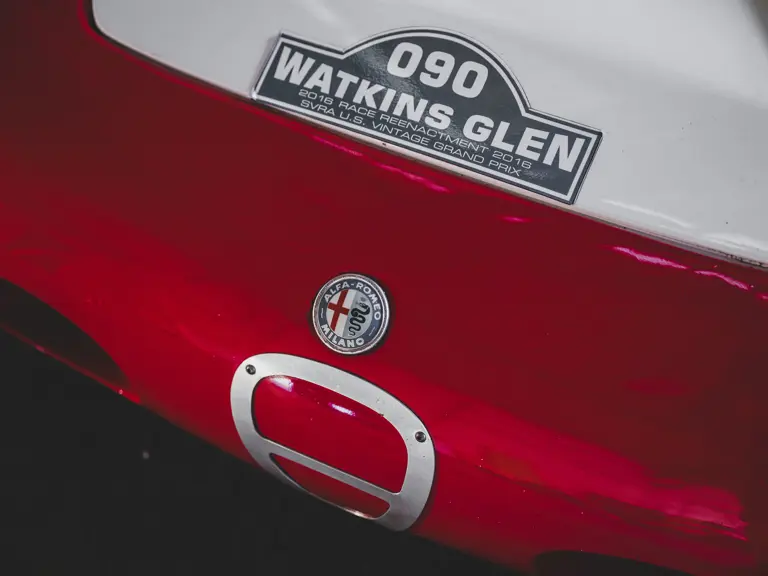
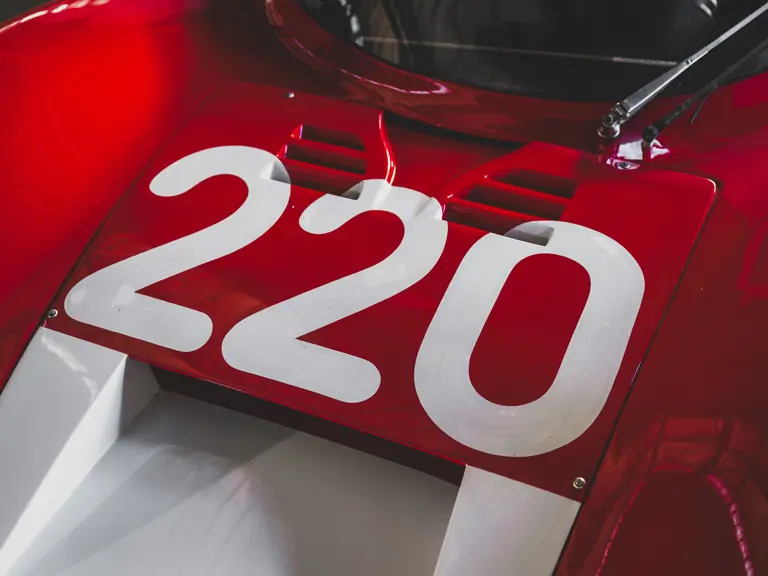
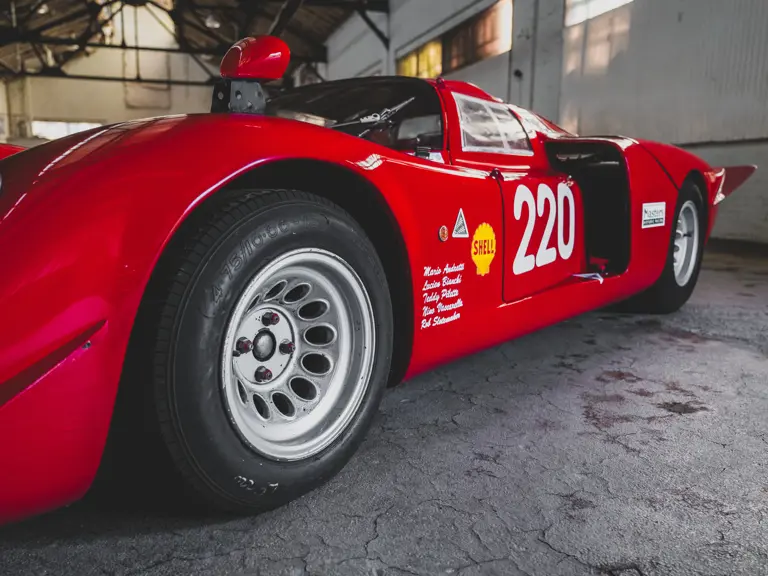
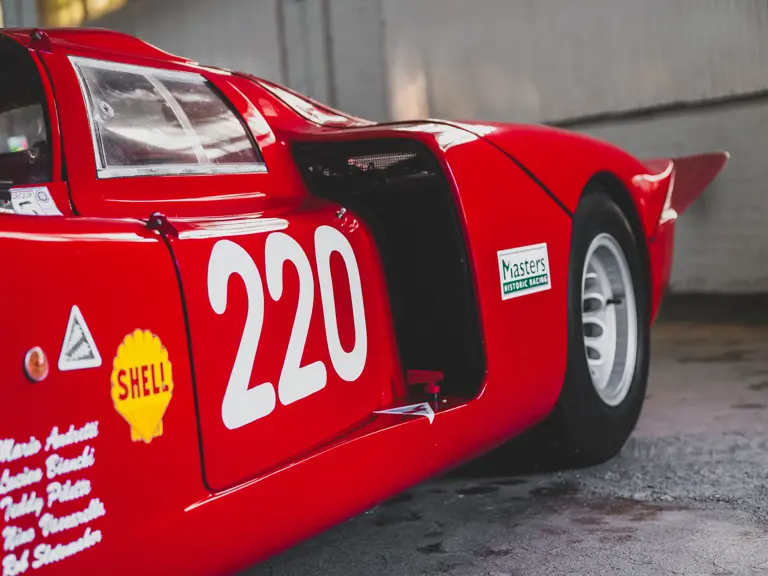
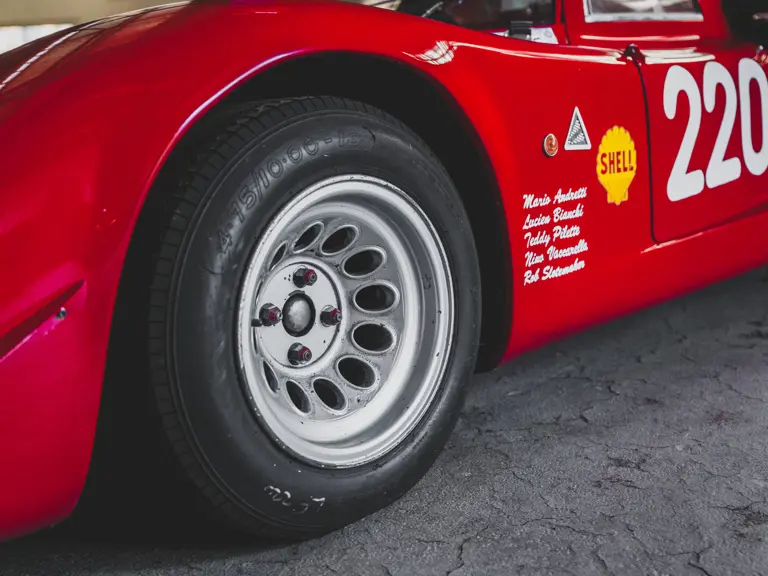
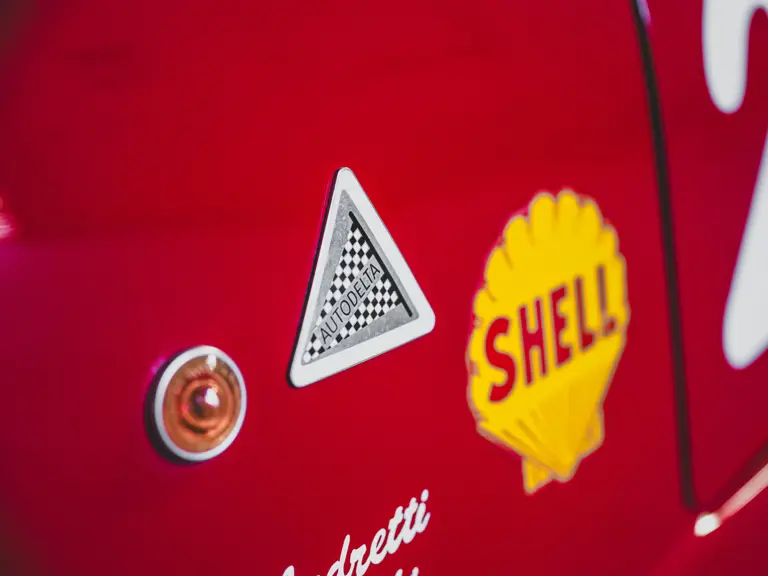
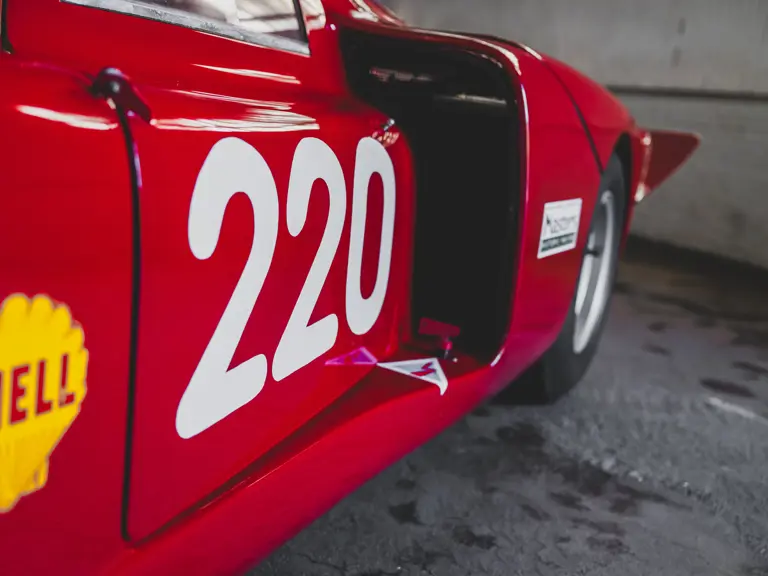
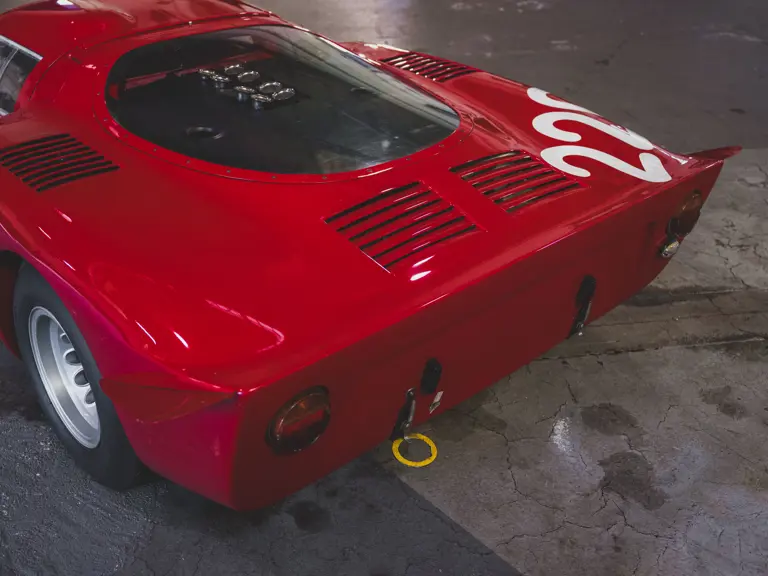
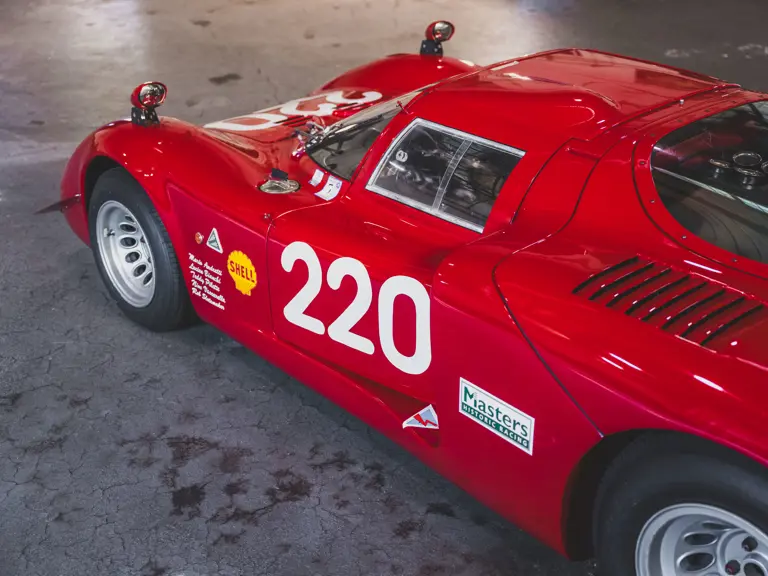
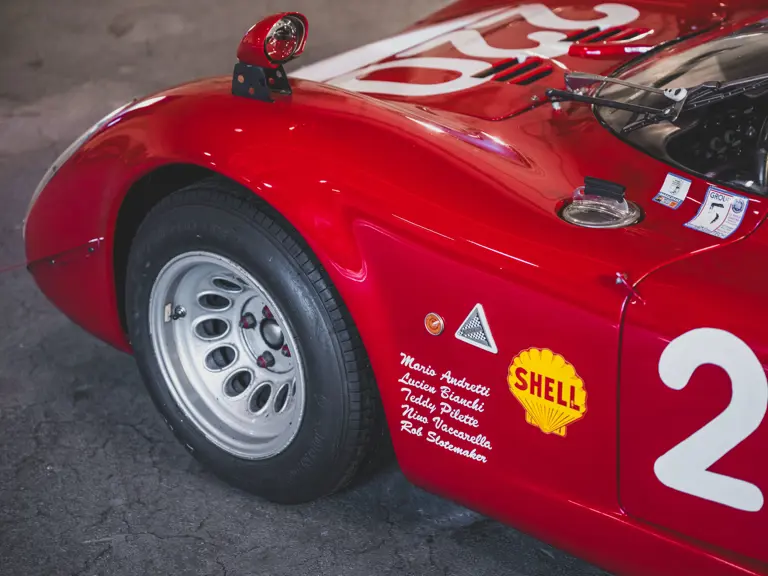
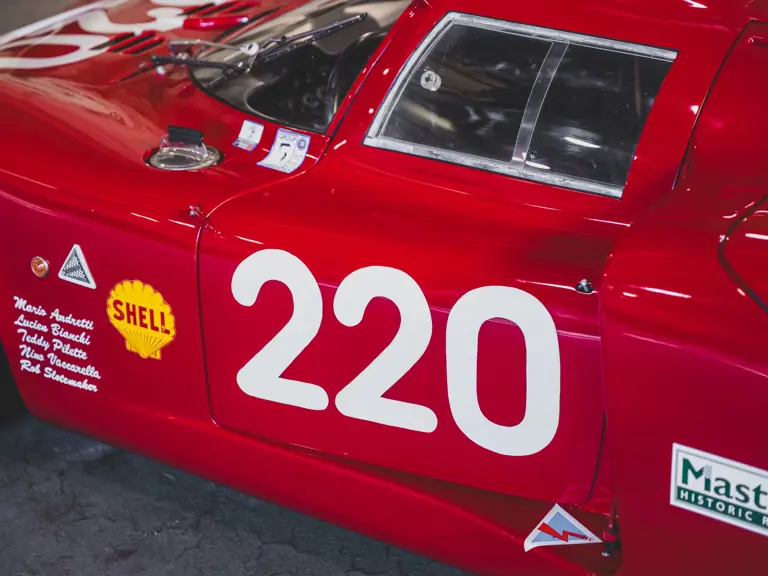
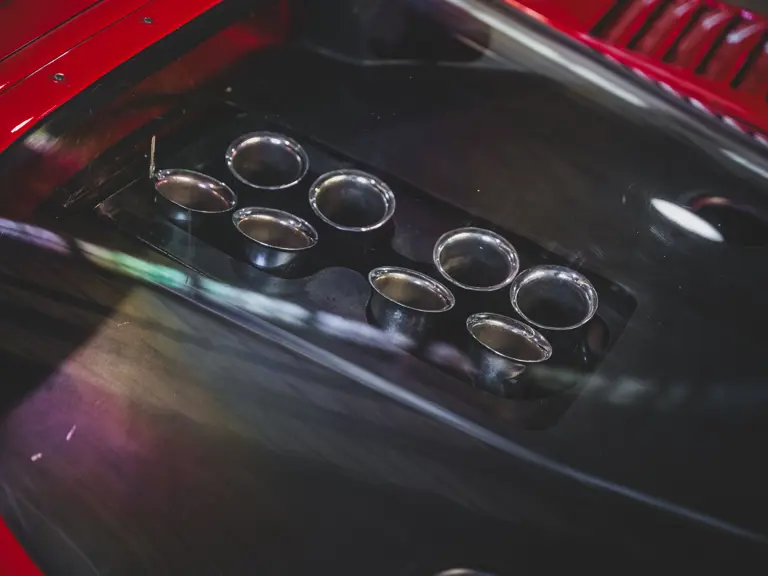
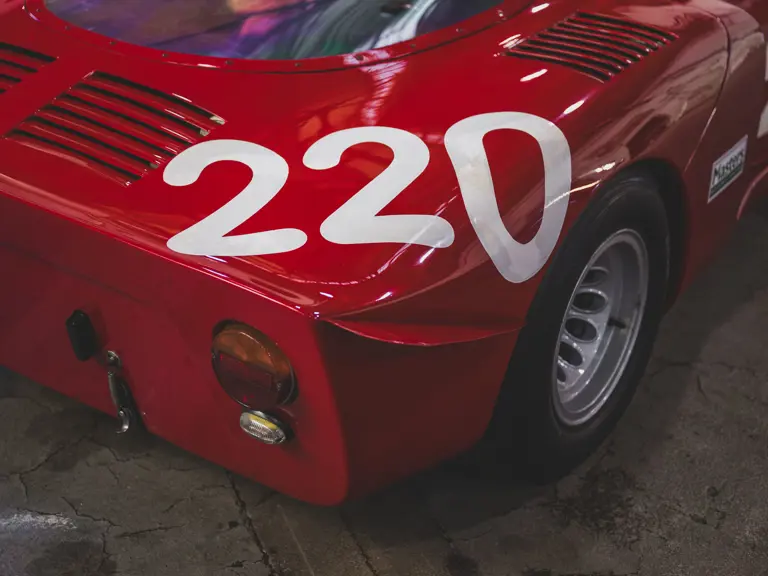
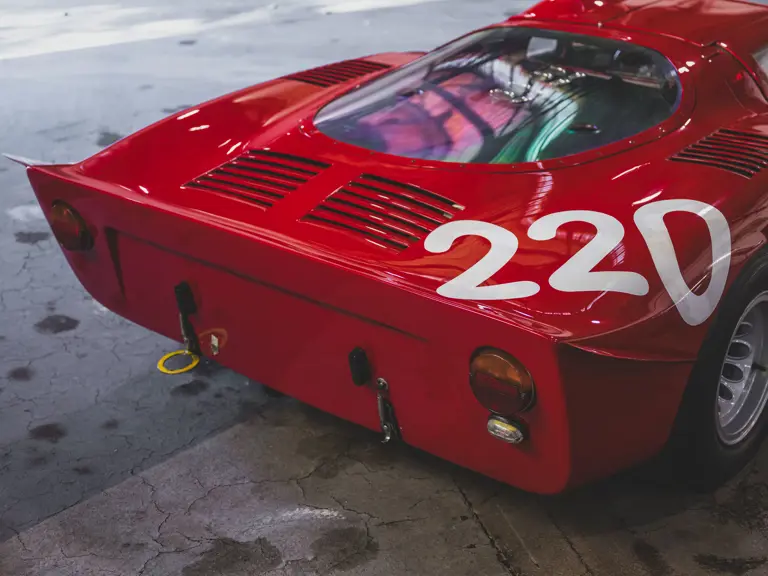
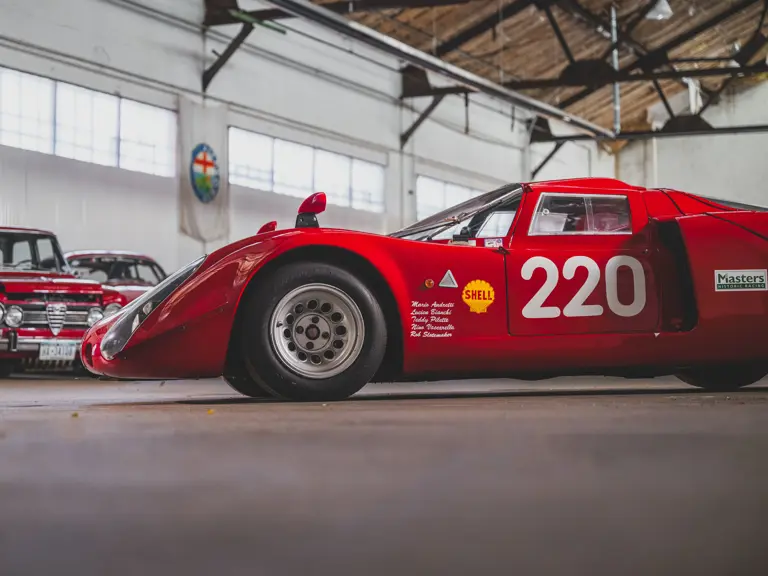

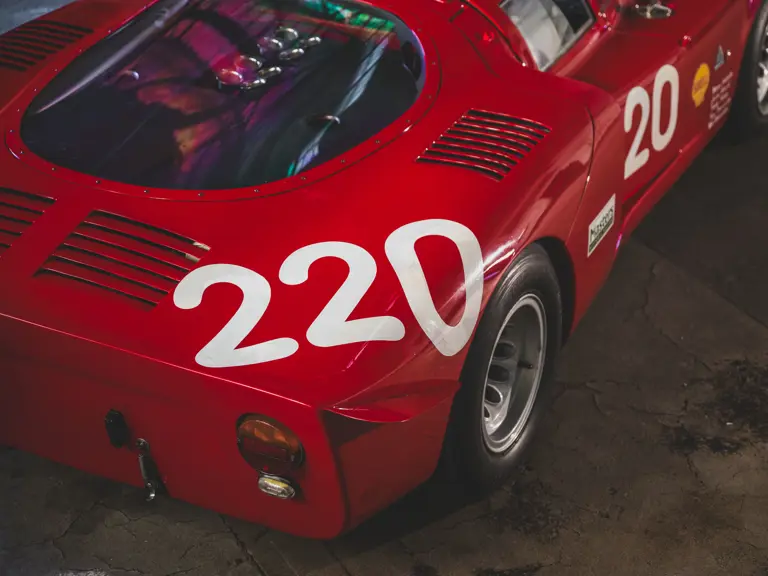
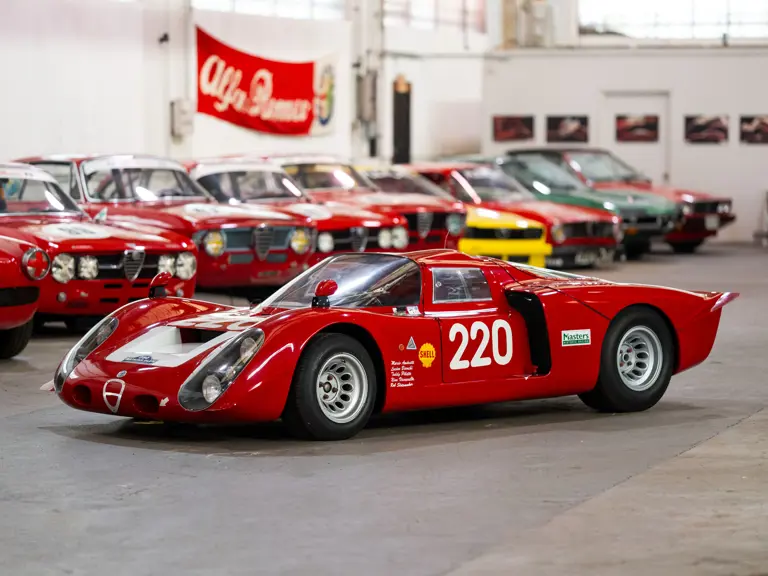
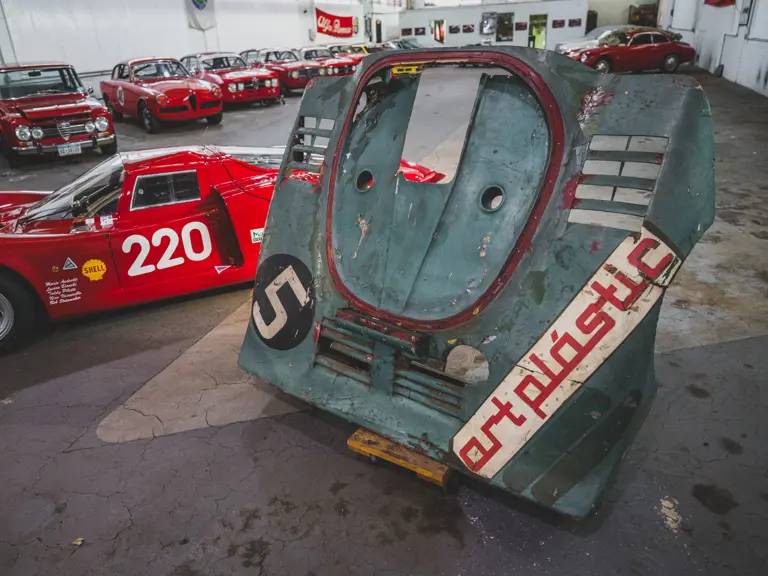
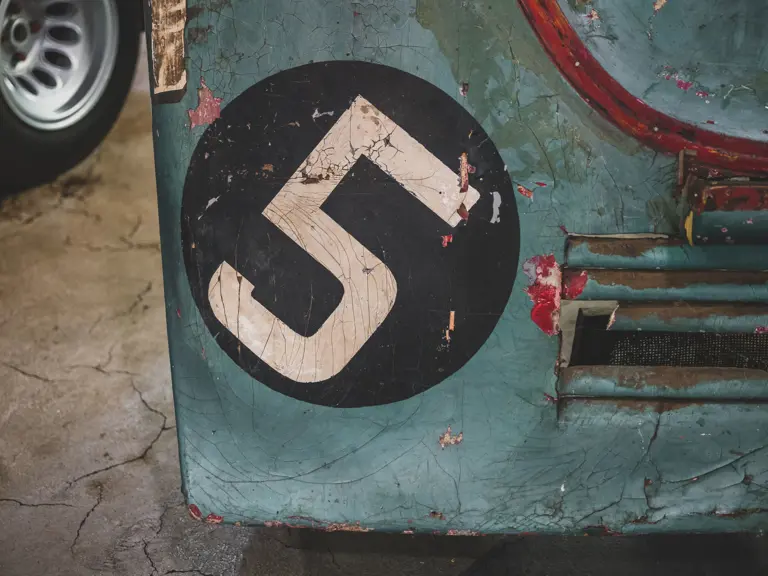
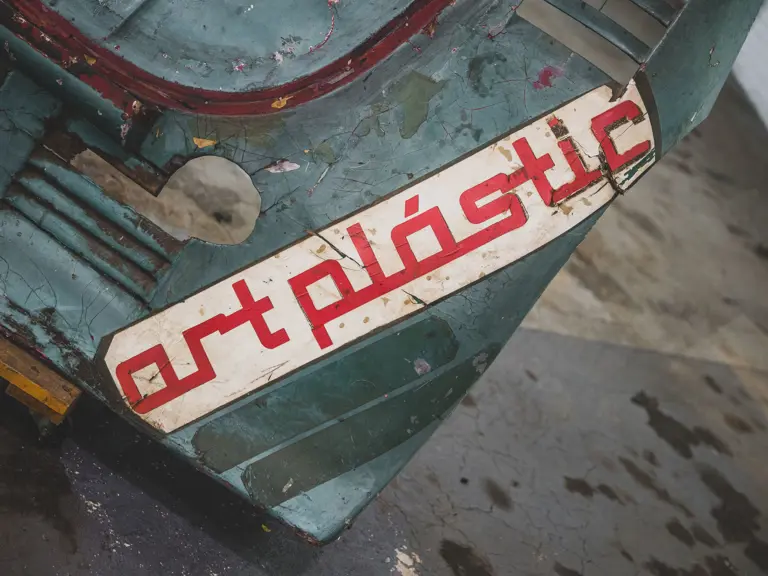
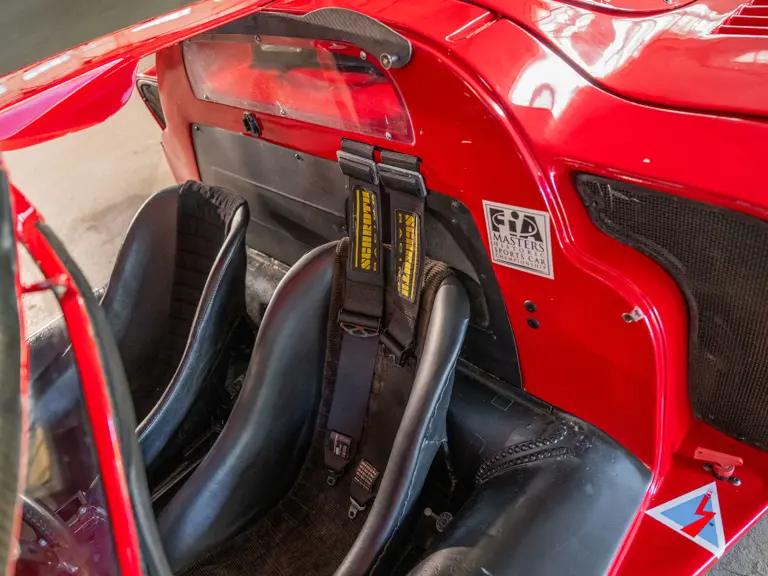
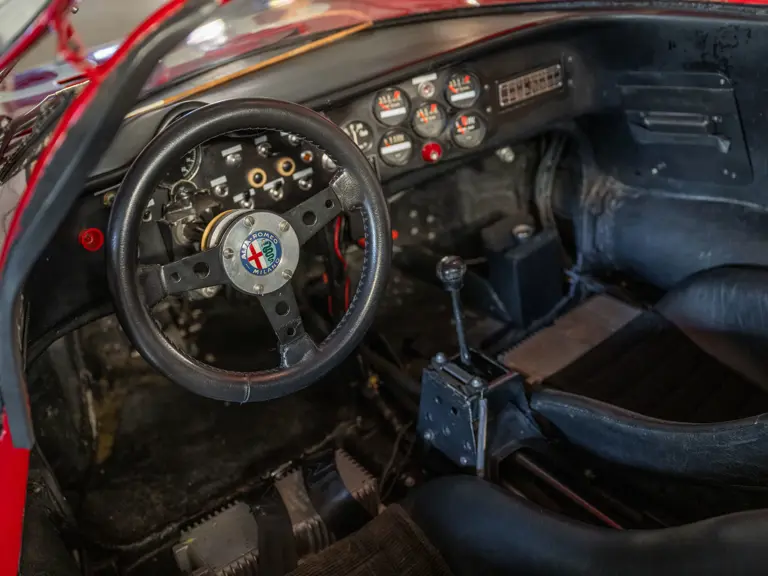
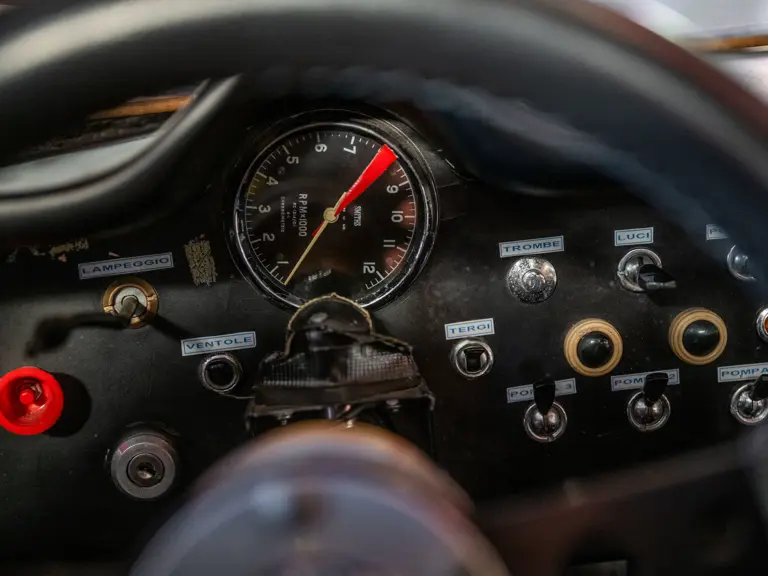
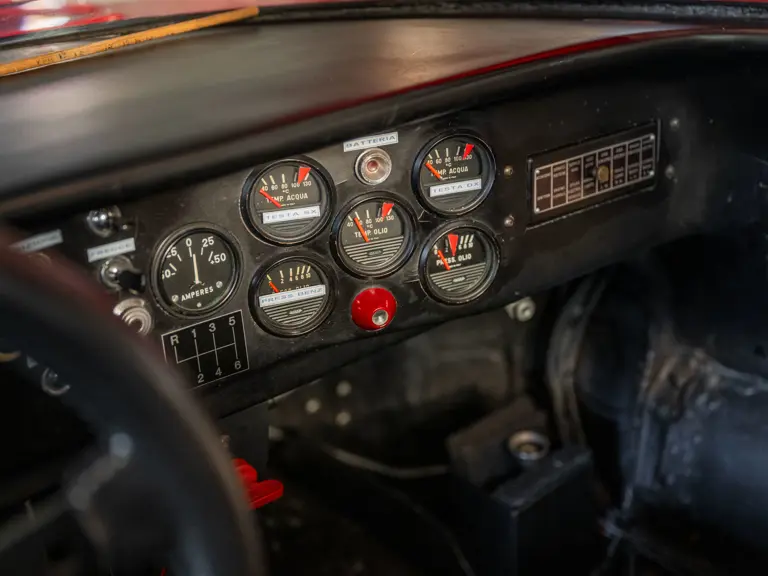
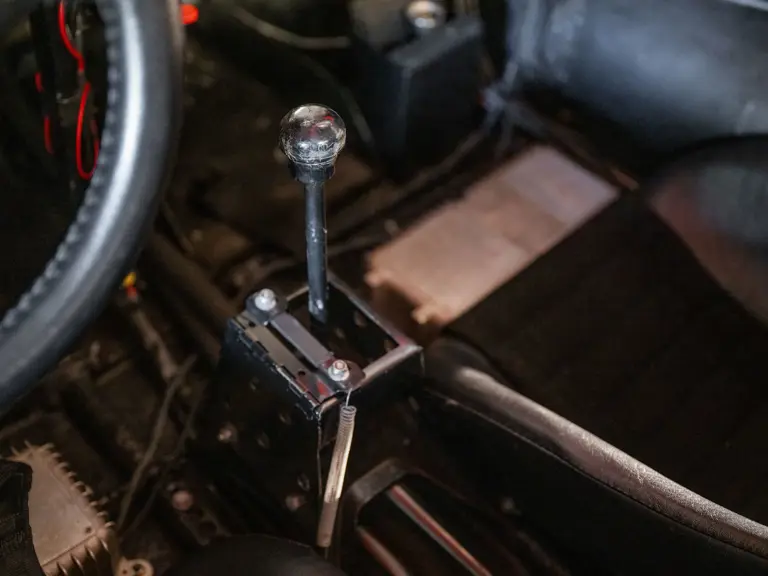
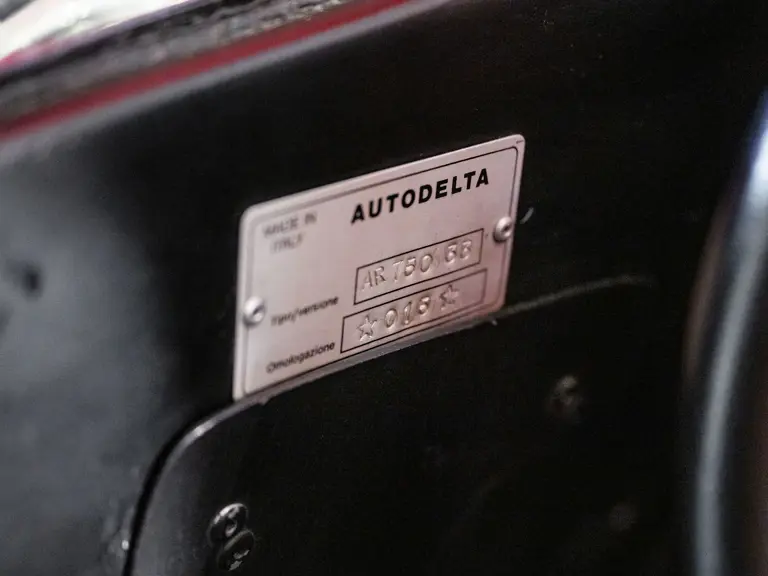
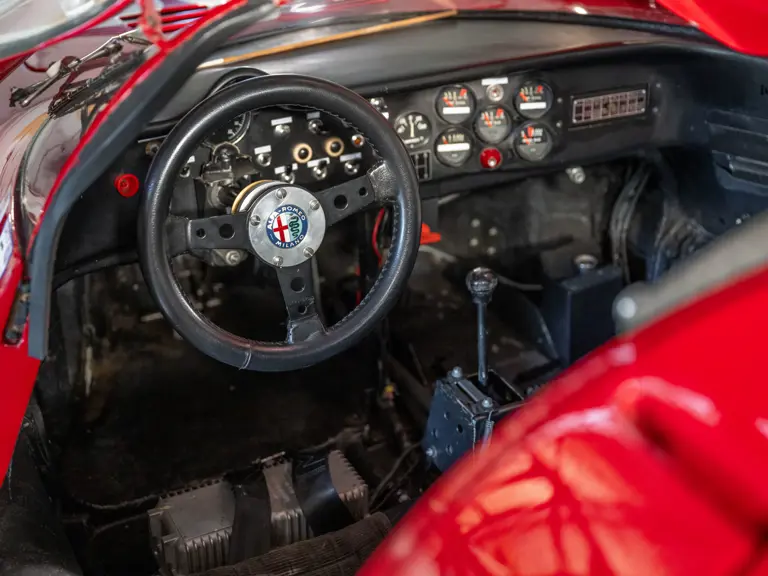
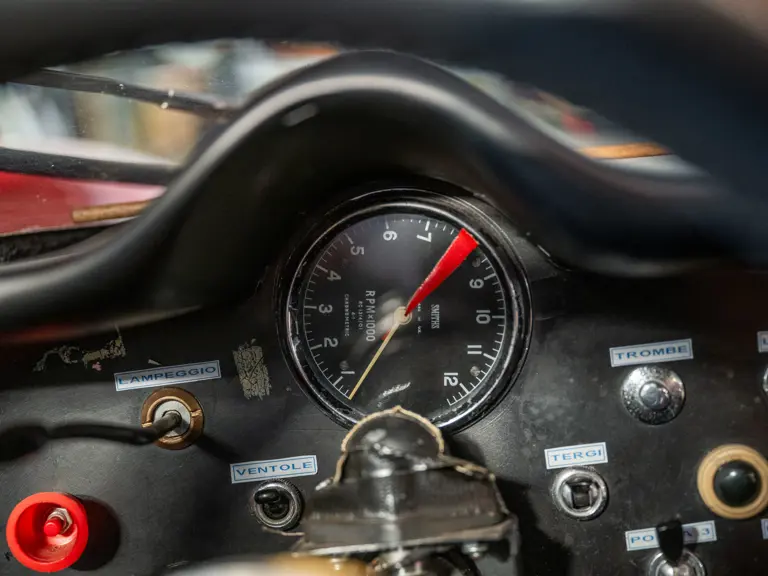
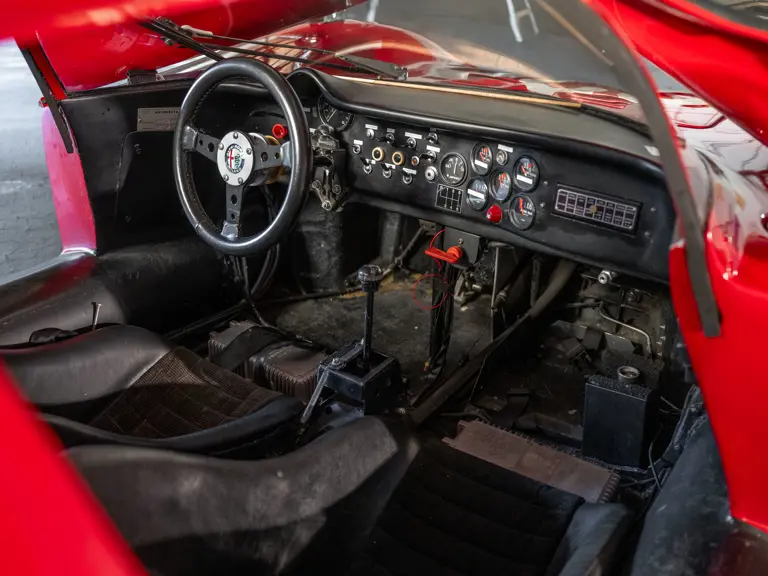
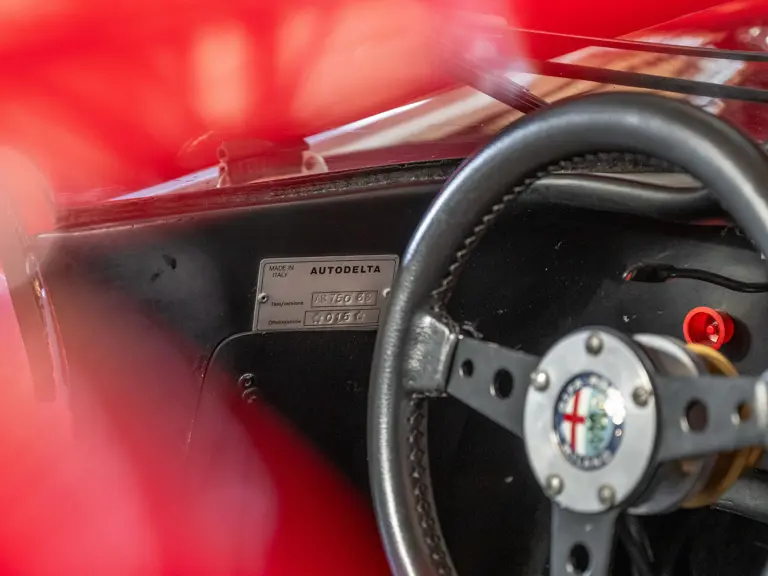
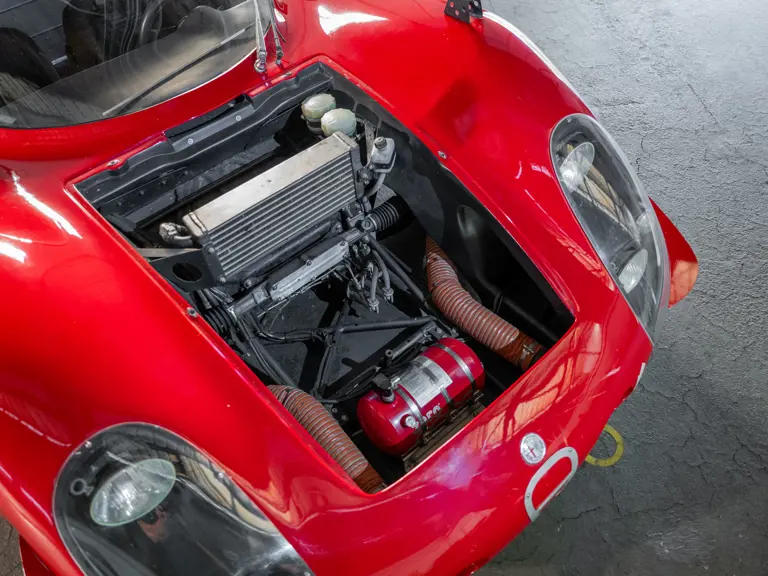
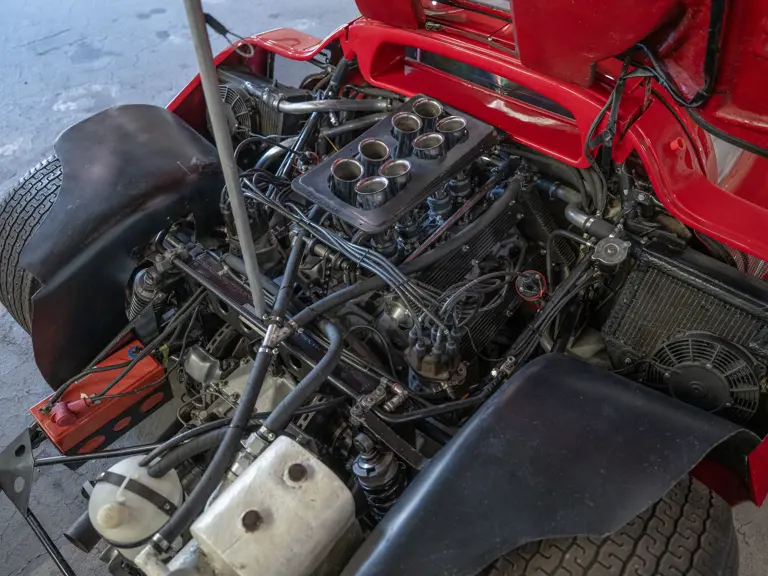
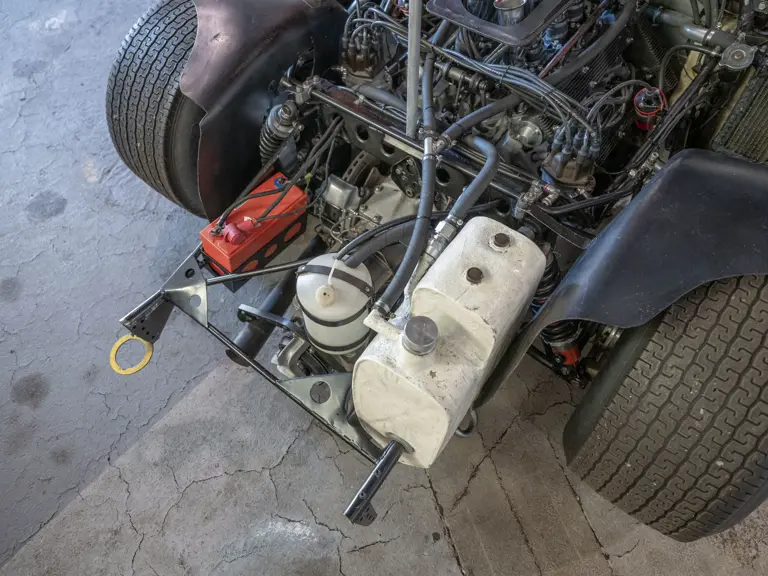
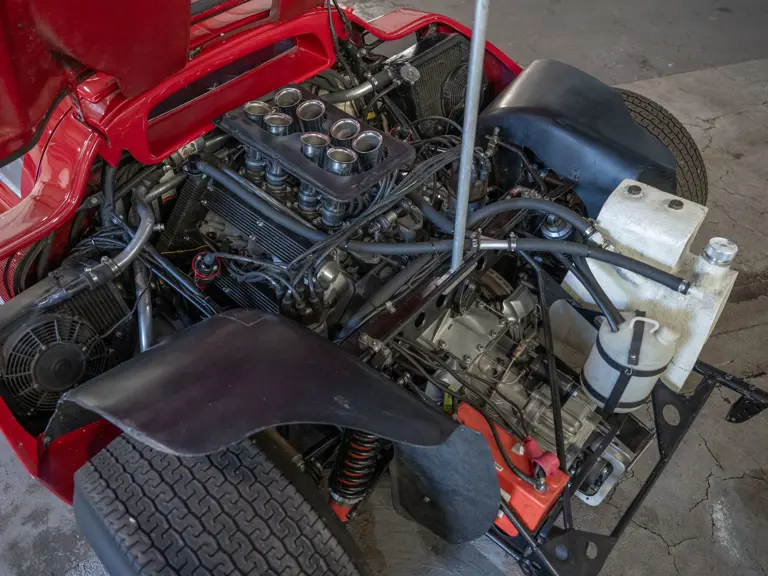
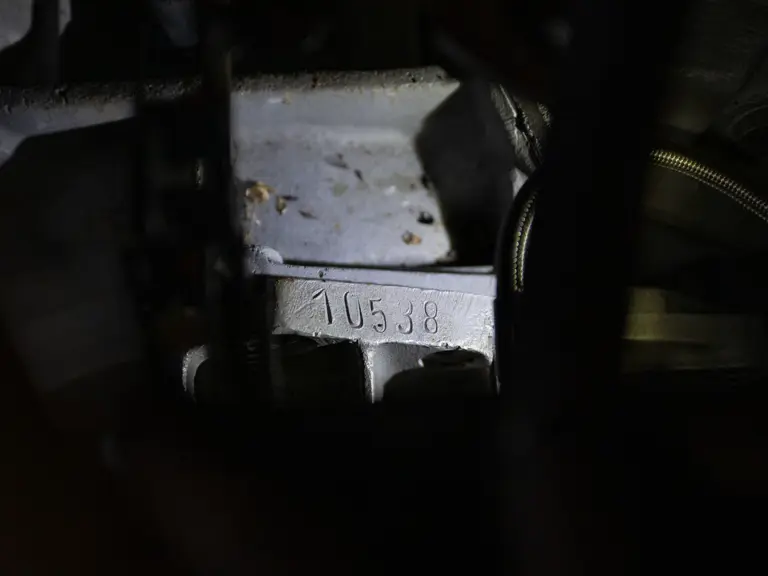
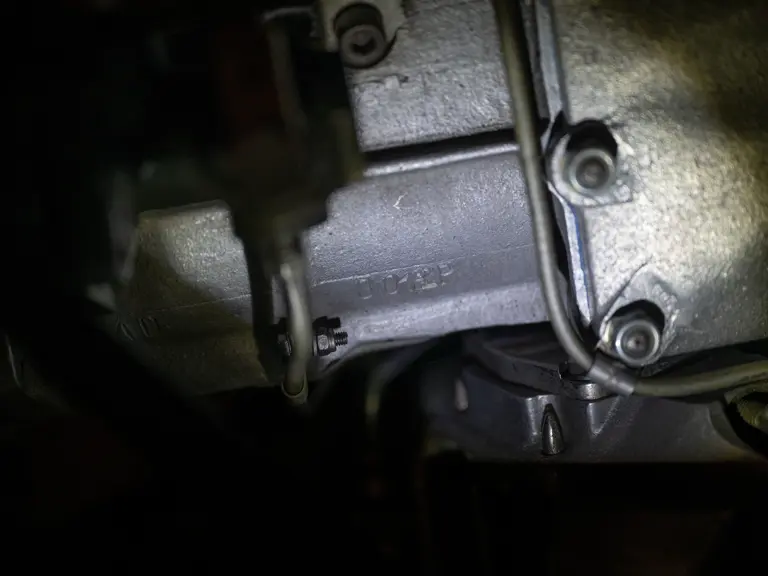
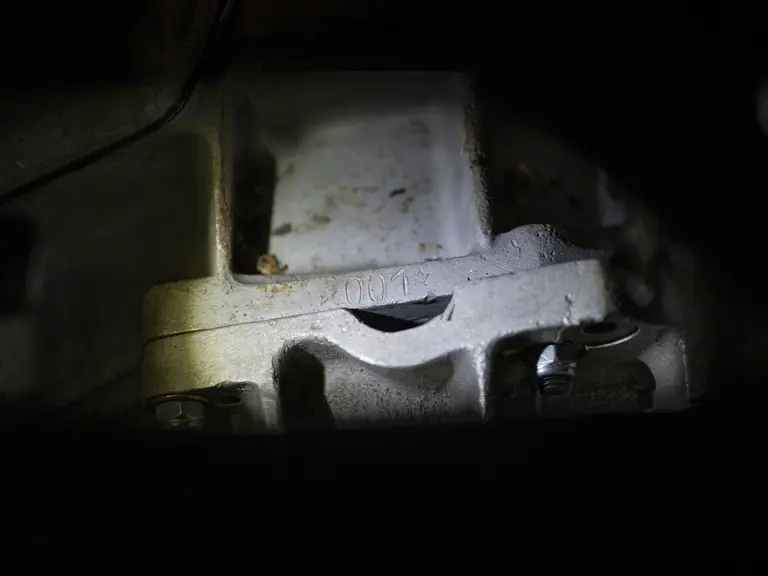
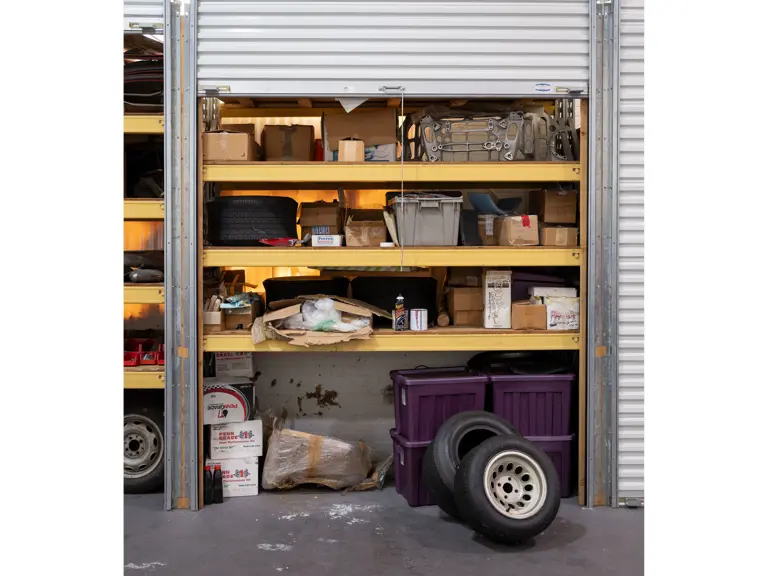
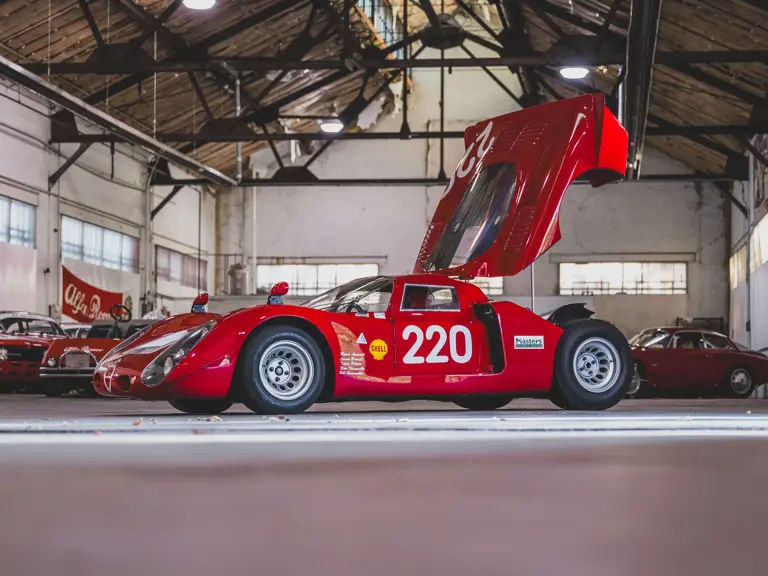
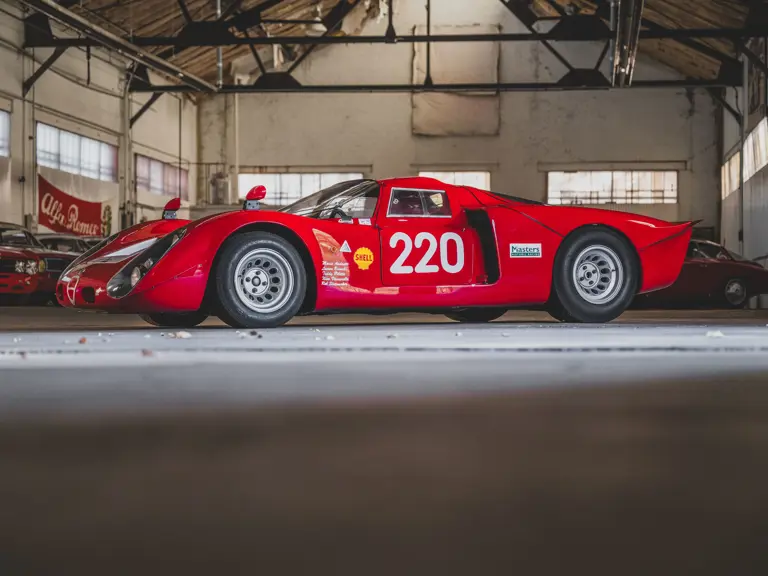
 | Monterey, California
| Monterey, California
